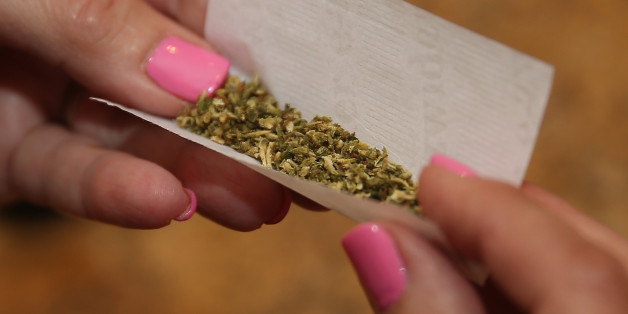“Medicine continues to struggle in its approaches to numerous common subjective pain syndromes that lack objective signs and remain treatment resistant. Foremost among these are migraine, fibromyalgia, and irritable bowel syndrome, disorders that may overlap in their affected populations and whose sufferers have all endured the stigma of a psychosomatic label, as well as the failure of endless pharmacotherapeutic interventions with substandard benefit. The commonality in symptomatology in these conditions displaying hyperalgesia and central sensitization with possible common underlying pathophysiology suggests that a clinical endocannabinoid deficiency might characterize their origin. Its base hypothesis is that all humans have an underlying endocannabinoid tone that is a reflection of levels of the endocannabinoids, anandamide (arachidonylethanolamide), and 2-arachidonoylglycerol, their production, metabolism, and the relative abundance and state of cannabinoid receptors. Its theory is that in certain conditions, whether congenital or acquired, endocannabinoid tone becomes deficient and productive of pathophysiological syndromes. When first proposed in 2001 and subsequently, this theory was based on genetic overlap and comorbidity, patterns of symptomatology that could be mediated by the endocannabinoid system (ECS), and the fact that exogenous cannabinoid treatment frequently provided symptomatic benefit. However, objective proof and formal clinical trial data were lacking. Currently, however, statistically significant differences in cerebrospinal fluid anandamide levels have been documented in migraineurs, and advanced imaging studies have demonstrated ECS hypofunction in post-traumatic stress disorder. Additional studies have provided a firmer foundation for the theory, while clinical data have also produced evidence for decreased pain, improved sleep, and other benefits to cannabinoid treatment and adjunctive lifestyle approaches affecting the ECS.
Various strategies to treat CED conditions are possible. A direct approach with CB1 agonists must recognize the fact that the ECS operates as a homeostatic regulator that sometimes requires a gentle pharmacological nudge, rather than a forceful shove, by synthetic full agonists. Thus, small doses of a weak partial agonist (e.g., THC) should be considered, which would not induce tolerance and may jump-start the ECS. Even THC alone is poorly tolerated or appreciated by patients,98 and standardized whole cannabis extracts that contain additional synergistic and buffering components, such as CBD and cannabis terpenoids, are certainly preferable.93 Alternatively, FAAH inhibitors will also raise AEA levels, but only CBD among them has achieved current legal commercial market availability. Pharmaceutical approaches affecting endocannabinoid transport or its genetic regulation would also hold promise. Beyond drug interventions, a growing body of knowledge supports the realistic goal that lifestyle approaches should be integral to the treatment of CED; specifically, low-impact aerobic regimens have demonstrated beneficial effects on endocannabinoid function,99 and as discussed above, dietary manipulations with probiotics and prebiotics may ameliorate not only IBS symptoms but also the entire spectrum of CED conditions. Ultimately, multimodality approaches are most likely to be fruitful in treatment of these common yet difficult clinical challenges.
http://online.liebertpub.com/doi/pdf/10.1089/can.2016.0009]]>


 “Headache disorders are common, debilitating, and, in many cases, inadequately managed by existing treatments. Although clinical trials of cannabis for neuropathic pain have shown promising results, there has been limited research on its use, specifically for headache disorders. This review considers historical prescription practices, summarizes the existing reports on the use of cannabis for headache, and examines the preclinical literature exploring the role of exogenous and endogenous cannabinoids to alter headache pathophysiology. Currently, there is not enough evidence from well-designed clinical trials to support the use of cannabis for headache, but there are sufficient anecdotal and preliminary results, as well as plausible neurobiological mechanisms, to warrant properly designed clinical trials. Such trials are needed to determine short- and long-term efficacy for specific headache types, compatibility with existing treatments, optimal administration practices, as well as potential risks.”
“Headache disorders are common, debilitating, and, in many cases, inadequately managed by existing treatments. Although clinical trials of cannabis for neuropathic pain have shown promising results, there has been limited research on its use, specifically for headache disorders. This review considers historical prescription practices, summarizes the existing reports on the use of cannabis for headache, and examines the preclinical literature exploring the role of exogenous and endogenous cannabinoids to alter headache pathophysiology. Currently, there is not enough evidence from well-designed clinical trials to support the use of cannabis for headache, but there are sufficient anecdotal and preliminary results, as well as plausible neurobiological mechanisms, to warrant properly designed clinical trials. Such trials are needed to determine short- and long-term efficacy for specific headache types, compatibility with existing treatments, optimal administration practices, as well as potential risks.” 


